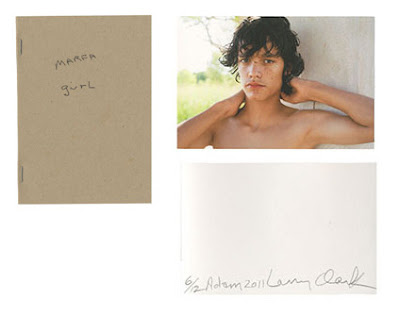Last week, the show "Splendour of Textiles" at Warsaw's Zachęta Gallery made me discover some fantastic tapestry pieces, along with the fact that these are a big deal in the landscape of Polish art.
Here the highlights and the links they wove in my head.
1. Woven Words
I did not know that the inventor of the amorphous Abakans and dinosaur of Polish art Magdalena Abakanowicz had also done some writing:
The large-scale copy of the Warsaw Life newspaper from May 25, 1973 struck me with its sober accuracy. Bizarrely it also made me think of Tracy Emin's woven manifestations exhibited two years ago at the Hayward Gallery. Their individualistic messages contrast blatantly with Abakanowicz's mirror on the propaganda of a Communist regime.
2. Cut out for it
The rare non-textile object in the show was Katarzyna Józefowicz's staggering black-and-white "carpet" created from magazine cuttings.
 |
| Katarzyna Józefowicz, Dywan Czarno-Bialy, 2001-2003 |
The muted faces, hugging the floor, were like contemplative cousins to Geoffrey Farmer's exuberant installations, like Leaves of Grass (which I admired at last year's dOCUMENTA) and Surgeon and the Photographer (currently on at the Curve in London's Barbican).
 |
| Geoffrey Farmer, Leaves of Grass, 2012 |
3. Of Communist Blocks and Gay-ish Rainbows
I was balled over by Julita Wojcik's Falowiec, a crocheted model of Poland's longest building, a 850m-long housing block in Gdansk.
Julita Wojcik, Wavy Block 2005-2006, 5.5 metres long
|
While researching the project, I discovered that Miss Wojcik also created the rainbow which dominates Warsaw's Plac Zbawiciela a.k.a. Plac Hipstera (hipster square).
The work - whose homophile message has never been confirmed - consists of 16,000 artificial flowers, and has fallen victim to several mysterious attacks.
After a fire around New Year's Eve, the rainbow has now been left half-burnt, as a symbolic reminder (here a recent New York Time's article on the infamous sculpture).
So much for the versatility of textiles.
















